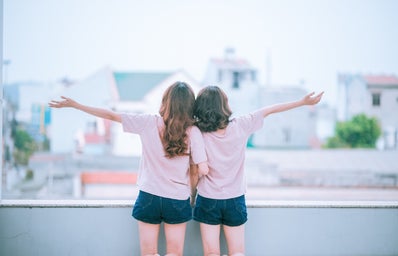I’m a heroine addict.
Now, don’t be alarmed, this kind of addiction doesn’t require a 12-step program — but in order to get my fix, I need a dose of kick-butt, well-written, interesting female characters on a regular basis.
Unfortunately, in today’s media climate, I’m constantly suffering from withdrawals.
A prime example of the lack of female heroines in the media is the comic book superhero re-vamp trend. In the past decade, we’ve seen three “Iron Man” installments, two rounds of “Spiderman,” countless Batmen, and all the X-Men (and woman, thank goodness for Mystique). We’ve watched the “Green Lantern,” “Captain America,” “Thor,” and countless others.
The box office has without a doubt been dominated by cape-clad superheroes for as long as we can remember, but super strength and latex suits aren’t all these stories have in common. One obvious thread has all of these movies linked beyond the typical superhero storyline — a male protagonist. This has left many wondering, where is Wonder Woman?
Wonder Woman, aka Diana Prince, has long been held as an icon of sexual equality and feminism. An Amazonian warrior princess who fights for peace and justice, she’s been written to fight the Axis powers during World War II and conquer super villains with her superior strength and Lasso of Truth. Regardless of whether you read comics or not, it’s important to consider why this fantastic heroine has been pushed aside in Hollywood in favor of male superheroes, and the greater truth it speaks for the false narratives Hollywood believes about women and film.
A 2014 study done by the Women’s Media Center (WMC) found that in 2012, women had the fewest speaking roles in the top 100 films since 2007. They discovered that in 2013, only 16 percent of all filmmakers in the 250 top-grossing films were women, most likely due to the fact that the top decision-makers in film hold the perception that there are fewer qualified women filmmakers than there are men. The stats on women of color are even more disheartening — of the 565 directors of the 500 top-grossing films, only a dismal two were black women.
Without women behind the scenes, the roles for women characters will inevitably remain hollow and stereotypical. Even when women are in movies, their roles are often less developed and take a backseat to their male counterparts. They are also more likely to take their clothes off — in 2012, women were three times more likely than men to be naked or semi-naked on screen. This statistic is especially true for increasingly young actresses (ages 13-20 were more likely to be partially naked than ages 21-39) and actresses of color (the WMC found that 40 percent of Hispanic actresses were partially nude when on screen).
So what gives? Women purchase half of the movie tickets sold in the US, so why do films still cater to the male gaze? Why is it almost impossible to watch a movie that depicts women as the multi-faceted, powerful, and interesting human beings we are, yet so easy to find ones that rely on ancient stereotypes and objectification? The wildly successful “Hunger Games” franchise, led by our HCCP girl crush Jennifer Lawrence, shows that both women and men are hungry (no pun intended) for awesome movies with a female lead. “Gravity,” up for several Oscars this year, also shows a woman can single-handedly carry a profitable film. It’s also been shown movies that pass the Bechdel Test gross higher than those who don’t.
This leads us back the original question — where is Wonder Woman? It appears that Hollywood still believes, despite all the evidence to the contrary, that people won’t watch movies led by women. Major studios still believe a female lead is too much of a risk and that their profit margin would inevitably suffer — and that is why we should care. When audiences demand for and support movies featuring well-crafted female leads, studios have to listen. Especially in the age of social media, we are in control of shifting away from the tired male-centered movies by not settling for movies using the same stale formula of a dude saving the day.

